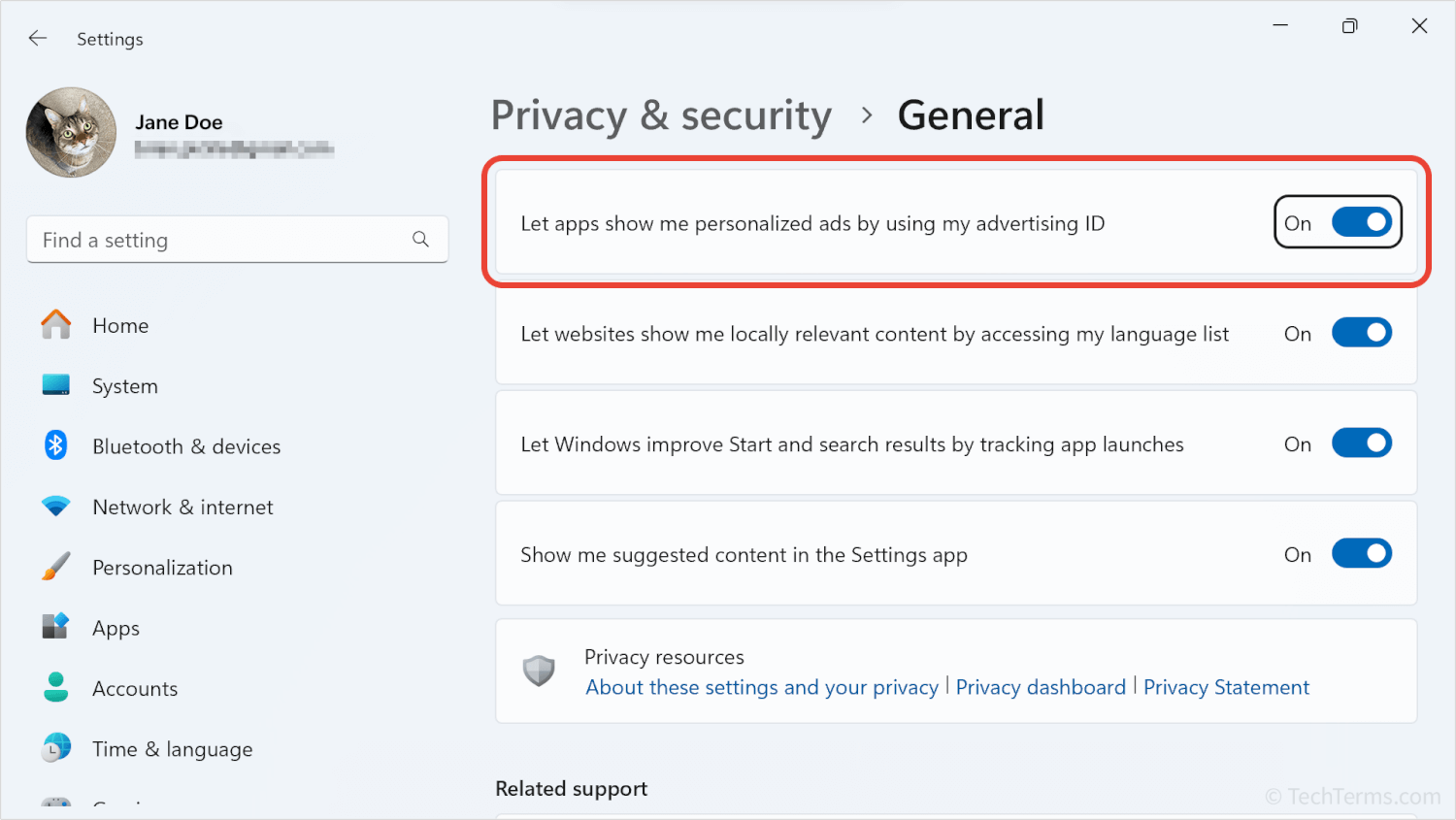Advertising ID
An advertising ID is a unique identifier string assigned to a device by its operating system. It is similar to a web cookie, but instead of tracking a person's activity across websites, it helps track it across apps installed on their device. Advertisers can use the activity linked to an advertising ID to create profiles, which they then use to deliver targeted ads within ad-supported apps. Users can reset their device's advertising ID to start over with a new identity or disable them entirely to replace targeted ads with non-personalized ones.
Android, iOS, and Windows platforms all use advertising IDs to help developers and advertisers track users' behavior, including which apps they have installed and how they use them. By analyzing usage patterns, advertisers can build a profile for each advertising ID based on the user's interests and demographics. With this data, advertisers can show ads that are relevant to the user and more likely to get engagement. For example, an outdoorsy person may see an ad for a kayak, whereas a music fan may see a new set of headphones instead.
Each platform uses a different name for them — Android calls them Google Advertising IDs (GAIDs), iOS uses Identifier for Advertisers (IDFA) strings, and Windows calls them Advertising IDs — but they all perform the same function. Android and iOS advertising IDs are randomly-generated UUID strings consisting of 32 hexadecimal digits, while Windows generates a slightly longer 33-character string. While the data linked to advertising IDs should not be specific enough to identify a specific person, many people are still concerned about the privacy implications of extensive tracking. To give their users more control over their information, these platforms all provide ways to reset a device's advertising IDs at any time or opt out of ad personalization entirely.

 Test Your Knowledge
Test Your Knowledge